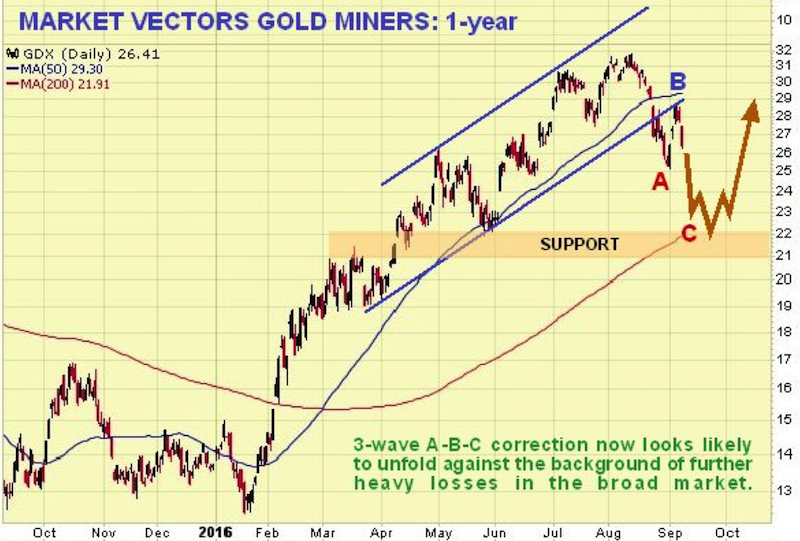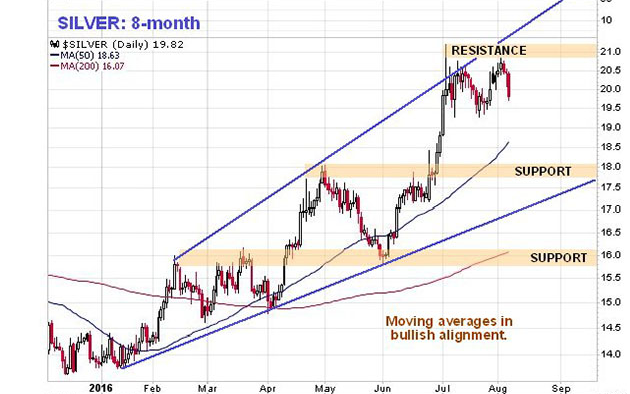Technical analyst Clive Maund assesses the precious metals landscape after Friday's broad market selloff, and offers strategies for precious metals investors.

After what happened on Friday, many Precious Metals sector investors are naturally concerned about the effect of further heavy losses in the broad market on the sector. Let's now review Friday's action, starting with the broad market itself, before moving on to consider the likely impact on the PM sector.
After almost two months of quietly drifting sideways, the ground opened up beneath the broad market on Friday, as we can see on the 6-month chart for the SP 500 index below. It gapped down at the open and plunged by 2.45%, heading ever lower as the day unfolded, there was not even the customary bounce in the last hour of trading. Continue reading "Precious Metals Sector Downside Target on Friday's Market Rout"

